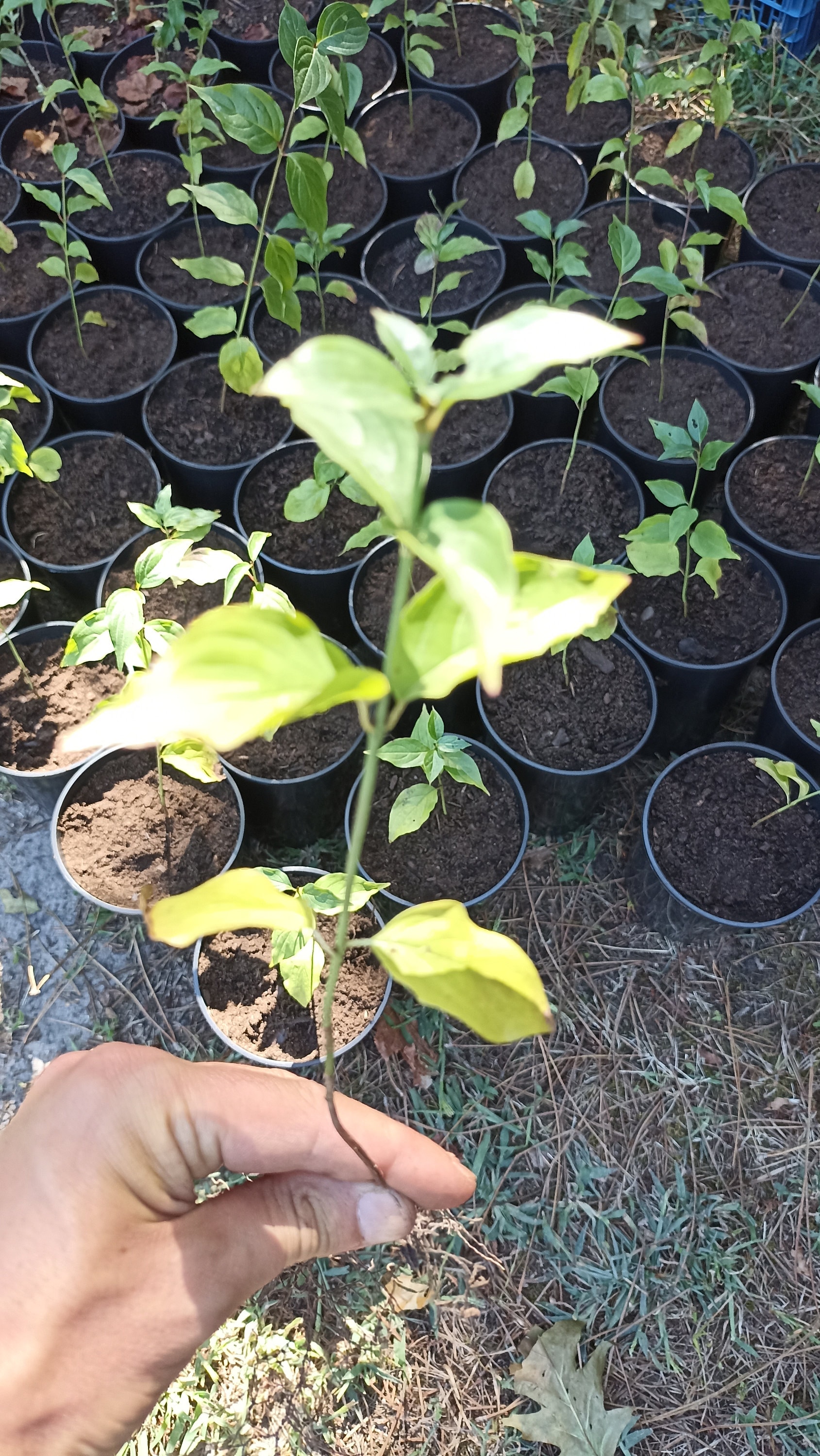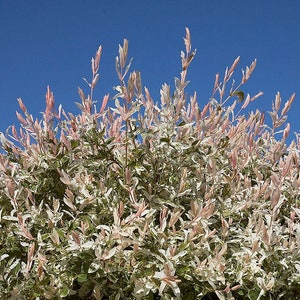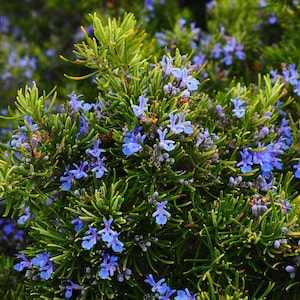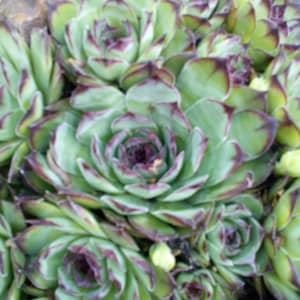

Male Dogwood Plant, Cornus Mas, Bare Roots
$15.95 $22.78
(3)
-
DetailsSowing **Cornus** seeds (a genus that includes species such as the **European Dogwood** (*Cornus sanguinea*), the **Flowering Dogwood** (*Cornus florida*), or the **Japanese Dogwood** (*Cornus kousa*)) requires specific conditions, as these seeds have a dormant period that must be broken to promote germination. Here is a guide to successfully sowing dogwood seeds.
---
### **Materials required:**
- **Cornus** seeds.
- Light, well-drained substrate (seedling compost or a sandy mixture).
- Pots or seed trays.
- Fridge or a cool room for stratification.
- Watering can or spray bottle.
- Mulch (optional).
---
### **Steps for sowing Cornus seeds:**
#### 1. **Seed preparation:**
Dogwood seeds require **cold stratification** to break their dormancy before they can germinate. Here's the procedure:
- **Seed Harvest**: Dogwood seeds are found in the fruits (drupes) that ripen in the fall. Collect the seeds after the fruits are fully ripe, often in late fall.
- **Cleaning the seeds**: After collecting the seeds, you need to clean them to remove any pulp or fruit debris. You can gently rub them under water to remove the pulp. Let them air dry.
- **Seed stratification**:
- Dogwood seeds need to undergo **cold stratification** to mimic winter conditions. Mix the seeds with a little **moist sand** or **peat moss** in a perforated plastic bag or airtight container.
- Store this mixture in a refrigerator at a temperature of **3-5°C** for about **3 to 4 months**. Cold stratification is crucial for the seeds to germinate properly.
---
#### 2. **Sowing seeds after stratification:**
Once stratification is complete, you can proceed to sowing the seeds.
- **Prepare the substrate**: Use a light, well-drained soil, such as a mixture of seedling compost and sand or perlite. Dogwoods prefer slightly acidic, well-aerated soil.
- **Sowing the seeds**:
- Sow the seeds at a depth of approximately **2 to 3 cm** in pots or seed trays.
- If using a tray, space the seeds about **3-5 cm** apart to prevent them from competing for nutrients.
- **Cover the seeds**: Lightly cover the seeds with substrate.
- **Watering**: Water gently with a spray bottle so as not to dislodge the seeds. Keep the soil slightly moist, but avoid it becoming soggy.
---
#### 3. **Germination conditions:**
- **Temperature**: Dogwood seeds generally germinate best at a temperature between **15°C and 20°C**.
- **Light**: Dogwood seeds benefit from **indirect light**, but they should not be exposed to direct sunlight, which can dry out or burn them. Make sure the location where you germinate the seeds is bright, but not in direct sunlight.
- **Germination**: Germination of dogwood seeds can take **2 to 6 months**, depending on the species and conditions. Be patient and check the soil moisture regularly.
---
#### 4. **Care after germination:**
- **Monitoring Seedlings**: Once the seeds have germinated, you will see small seedlings start to appear. Be sure to keep the soil slightly moist, but not soggy.
- **Thinning**: If you have sown several seeds in the same pot or tray, you will probably need to thin the seedlings to keep only the strongest ones. Young dogwoods should be spaced about **5 to 10 cm** apart.
---
#### 5. **Transplanting into open ground:**
- **When to transplant**: Wait until the seedlings have at least **4 to 6 leaves** and the root system is sufficiently developed before moving them into open ground or larger pots.
- **Conditions for transplanting**:
- Dogwoods prefer **slightly acidic** soil, well drained and enriched with organic matter. If you have soil that is too alkaline, you can add **peat moss** to slightly acidify the soil.
- Dogwoods like **partial shade** or **mild sun**. Choose a bright location, but one that is protected from excessive heat from direct sunlight.
- **Spacing**: When transplanting young plants into the ground, be sure to leave a space of approximately **2 to 3 meters** between each plant, as dogwood can grow quite large depending on the species.
---
#### 6. **Maintenance after planting:**
- **Watering**: Dogwoods prefer **moderately moist** soil. Be sure to water regularly, especially during the active growing season, but without saturating the soil with water.
- **Mulching**: Mulching around young plants can help maintain moisture and protect the roots from frost in winter.
- **Winter Protection**: If you live in a cold region, protect young dogwood plants from frost by covering them or using winter protection during their first year of growth.
---
### **Additional Tips:**
1. **Patience**: Germination of dogwood seeds can be long and variable. Be patient and maintain ideal conditions during the germination period.
2. **Soil Acidity**: If you live in an area where the soil is too alkaline, you can improve conditions by adding **ferrous sulfate** or **peat moss** to lower the pH.
3. **Fertilization**: Dogwoods do not need excessive fertilization. Use a light fertilizer, rich in organic matter, in the spring to stimulate their growth. -
Shipping & Policies
Shipping from France
Processing time
1-3 business days
Customs and import taxes
Buyers are responsible for any customs and import taxes that may apply. I'm not responsible for delays due to customs.
Payment Options
Returns & Exchanges
I gladly accept returns and exchanges
Just contact me within: 14 days of delivery
Ship items back to me within: 30 days of delivery
I don't accept cancellations
But please contact me if you have any problems with your order.
The following items can't be returned or exchanged
Because of the nature of these items, unless they arrive damaged or defective, I can't accept returns for:
- Custom or personalized orders
- Perishable products (like food or flowers)
- Digital downloads
- Intimate items (for health/hygiene reasons)
Conditions of return
Buyers are responsible for return shipping costs. If the item is not returned in its original condition, the buyer is responsible for any loss in value.
-
Reviews
Reviews (3)
Average:
May 2, 2024
Merci beaucoup. C’est très bonne
Mar 22, 2024
Envoi rapide et bien protégé Plants de bonne qualité
Oct 24, 2023
Мне понравился товар. Но листья высохли. Что нужно делать. Я посадила. Посмотрим примется. Спасибо




